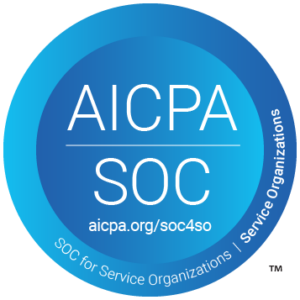The world’s technology is advancing – rapidly.
For some, it’s as though tomorrow’s technology has arrived early, with AI delivering a wave of helpful new tools. And we’re quickly learning that AI has the potential to impact a wide range of industries.
- Waste facilities equipped with AI can sort recyclables faster and more safely than humans.
- Researchers at the University of California Santa Cruz can use AI to identify diseases in real time with 99.8% accuracy.
- Dairy farmers can use AI to better understand herd reproductive health and improve milk production.
- And with AI, anyone can make impressive alterations to images without any Photoshop skills.
With no end in sight to AI’s ability to reshape industries, including higher education, concerns over job security have risen to the top. According to an article published in Forbes, “people are uncertain about whether they’ll be replaced by technology.”
The key to job security? Don’t fear AI – embrace it.
After all, it’s not the AI itself that will replace you, but someone who leverages AI more effectively than you.
Not to mention, this is hardly the first time that we’ve witnessed seismic shifts in labor markets. To help put it into perspective, we can draw parallels to historical events. For instance, railroad workers who laid tracks manually before the industrial revolution weren’t replaced by machines; they were replaced by fellow workers who built and operated machines that could do the job more efficiently.
The same principle applies today: by learning how to harness AI, you can stay ahead of the curve and maintain your competitive edge (a concept identified by Harvard Business Review as “cobotting”).
And just as those machines needed humans to build and operate them, AI and humans are better together. Remember, in higher education, AI is a complement to human intervention, not a replacement.
Let’s take a closer look at how AI is poised to reshape higher education for admissions, enrollment, and student success personnel.
Admissions
Admissions offices that use AI now are mostly focused on process automation – and that’s understandable. There are countless hurdles that students must overcome to be admitted (and just as many steps that admissions officers must take to process applicants).
AI chatbots already assist students with a myriad of such tasks, such as answering questions at 2:00am and guiding them through complex processes. These methods not only improve staff efficiency but also contribute to an enhanced student experience and higher retention rates.
But integrating AI into the admissions experience can be much more than scaling guidance and streamlining tasks.
What if a sophisticated AI could accurately predict applicants’ likelihood of success at an institution? AI could become essential for learners to help them identify their best-fit institution based on their desires and skills, guiding their college search and maximizing the impact of their higher learning experience. In this case, admissions personnel and students alike can focus on building the most beneficial relationships, ultimately contributing to enhanced student outcomes.
Enrollment Management
Today, enrollment management personnel use AI to power chatbots that guide students proactively and answer their questions in real-time to boost enrollment, but that’s just the tip of the iceberg.
Imagine strategic planning with an AI capable of analyzing vast volumes of data with the purpose of identifying the trends and patterns that lead to optimal enrollment scenarios. Leaders could use such information to understand more about their departmental performance in a fraction of the time, including which recruiting strategies yield the best results.
But take it a step further to consider student needs.
An AI that is capable of processing individual data for all students could help to ensure that students are offered the best guidance possible to enable their success. Not only do enrollment management personnel benefit from unparalleled insight into effective strategies, but the students themselves could benefit from strategies that focus on their success. Of course, this in turn, benefits the institution.
Student Success
Our current application of AI in student success is a great start – we can encourage learners to take actions that increase persistence and engagement with extended conversations driven by virtual assistants. This provides support similar to what a counselor might offer, but instead of one student at a time, it happens at scale, in a personalized way and on the students’ terms
But what if AI can play a deeper role in proactively identifying at-risk students and providing tailored interventions? This would accelerate the work of student success personnel and lead to outcomes far superior to competing institutions.
For instance, institutions can already use AI to evaluate data and detect when a student is struggling academically or socially, allowing advisors and faculty to intervene early and offer proactive support that prevents challenges before they arise. However, what if your advisors and student success personnel trained an AI to act with interventions in real-time? This could mitigate more challenges at scale, improving the experience for everyone involved.
And the human staff? They didn’t lose their jobs – they embraced AI to amplify the impact of their jobs.
Embracing AI in Higher Ed
To ensure that you stay ahead of the curve and harness all of the potential that AI has to offer, follow these 6 tips:
- Stay informed
Keep up with the latest AI developments and their impact on higher education through industry articles, conferences, and relevant courses or workshops. We frequently share developments during workshops and presentations at higher education conferences, and we do our best to keep our reads up to date here on our blog. - Connect with experts
Network with professionals already using AI in their roles to gain valuable insights and guidance. Join online forums, LinkedIn groups, or local meetups to learn from their experiences and best practices. Forming a professional network to collaborate on the most effective (and we cannot emphasize enough – beneficial) applications of AI for students will help to stay on pace with new developments. - Try AI tools
Explore AI-powered tools and platforms relevant to your field. Many companies offer free trials or demos, allowing you to assess their capabilities and suitability for your daily workflow. Some are very simple applications that help you organize your work stream, others require more exploration, such as tools for engaging with students. Just be sure that when you use AI to help your students (or your office) that they’re tested and proven to do no harm. - Collaborate with colleagues
Encourage your team members to embrace AI. Share your learnings and collaborate on implementing AI-driven strategies within your department. You can create contests to see who finds the most impactful use of AI – in the end, you all win. - Adapt and be patient
Adopting AI may require a period of adjustment. Remain open-minded and patient, knowing that the benefits of embracing AI will ultimately outweigh any challenges. - Test your AI applications
This is, in our opinion, the single-most important tip. When using technology, whether it’s AI or something else, we must ensure that we do no harm. How? Test your applications to ensure efficacy, and don’t stop there. Use control groups to understand how treatment (the use of technology, or AI) impacts the student population relative to those that did not receive the treatment. This is an essential step in ensuring that ethical concerns are identified, addressed and mitigated. It’s why we work with researchers to conduct independent Randomized Controlled Trials that evaluate the efficacy of our approach.
In summary, while AI is indeed transforming higher education and the greater landscape of jobs, it doesn’t have to threaten your career. By embracing AI and learning to leverage it effectively, you can not only safeguard your job but also become a more valuable and efficient professional in the ever-evolving world of higher education.


